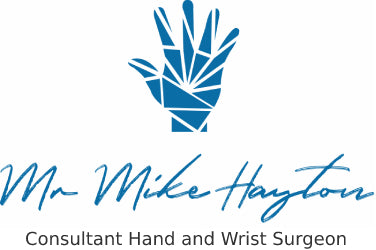Skier's Thumb
Mr Mike Hayton
FRCS (Trauma and Orth) FFSEM (UK)
Consultant Orthopaedic Hand Surgeon
Other common names
- Skier's thumb (acute injury)
- Gamekeeper's thumb
Who does it affect?
The acute injury to the thumb often occurs in collision sportspeople and is the second most common skiing injury in the upper limb. The chronic injury is described as a gamekeeper's thumb, and this was thought to occur as gamekeepers despatched of the animals by breaking their necks, causing a strain to the thumb.
Why does it occur?
The acute injury occurs as the thumb is twisted violently and ruptures the thumb metacarpo-phalangeal ligament on the inside.
Symptoms
Patients present with pain on the inside of the thumb and also a sense of weakness of the thumb, due to instability.
Clinical examination
The doctor will identify the area of localised pain, and there may be a small swelling, suggesting the ruptured end of the ligament. The doctor will gently move the thumb, and may notice increased laxity. This a short video clip on an unstable thumb prior to the surgery.
Investigations
Plain x-rays are performed, which may show a small fracture, but occasionally plain x-rays are normal. The doctor may perform stress x-rays, where local anaesthetic is placed around the thumb to numb the torn ligament, and this is then stressed whilst pain-free. Increased movement, compared with the opposite side, would be suggestive of a ligament injury. Ultrasound scans and MRI scans can also be performed to directly visualise whether the ligament has been injured.
Non-operative treatment
The vast majority of ulna collateral ligament injuries to the thumb (skier's thumb) are treated operatively. This is on account of the fact that once the ligament snaps it flips onto the wrong side of a nearby tendon. This prevents the ligament ends from healing directly to each other.
Operative treatment
This is usually performed under general anaesthetic, as a day case. A small (5 cm) incision is made on the inside of the thumb, and the ligament is directly repaired back to the bone, using a small bone anchor.
Post-operative rehabilitation
The patients are placed into a splint for the first week, and then supervised motion is permitted, with bending forwards and backwards of the thumb. However, no stress is allowed to be performed on the healing ligament for the first eight weeks.
Return to activities of daily living
Generally speaking, this occurs over the first four to six weeks.
Complications
Please click here to review the complications page for more information
